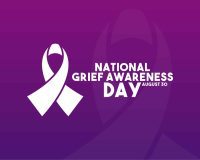
When someone is dying, family members and other loved ones are suddenly thrust into the role of caregiver, often with little preparation or knowledge of what to expect. According to the Associated Press-NORC Center’s Long-Term Caregiving Poll, nearly 40 percent of Americans are providing long-term care to an older family member or friend. Caregivers include 59 percent women, 41 percent men, with older caregivers likely to be caring for a parent or spouse, and those under 40 likely to be caring for a grandparent or friend.
You may consider caring for a loved one to be your duty or even a privilege, but no matter how gratifying it might feel, caregiving can be difficult work, both emotionally and physically. Many caregivers struggle with guilt, anger, anxiety and sadness as they strain from constant physical, emotional and financial challenges.
As caregiving responsibilities increase, they may find less time to take care of themselves, resulting in neglect of their own health that can result in not eating or sleeping well. Over time, caregivers can experience exhaustion and burnout or their own debilitating illness. Hospice is aware of the toll caring can take on the caregiver and family and helps address many of these issues by supporting patients and their first-time caregivers.
Hospice team members support the caregiver by providing information and answering questions. Caregivers also are given practical tips, advice and strategies to help them manage the considerable burden of caregiving. Many caregivers report much of their worry was relieved simply by knowing they were never alone, that they could call hospice at any time with a question, concern, or for help.
The Caregiver Action Network (CAN), a non-profit organization providing education, peer support, and resources free to family caregivers across the country offers ten tips for family caregivers:
- Seek support from other caregivers. You are not alone!
- Take care of your own health so that you can be strong enough to take care of your loved one.
- Accept offers of help and suggest specific things people can do to help you.
- Learn how to communicate effectively with doctors.
- Caregiving is hard work so take respite breaks often.
- Watch out for signs of depression and don’t delay getting professional help when you need it.
- Be open to new technologies that can help you care for your loved one.
- Organize medical information so it’s up to date and easy to find.
- Make sure legal documents are in order.
- Give yourself credit for doing the best you can in one of the toughest jobs there is!
When a caregiver ignores the signs of fatigue, they can find themselves experiencing something called compassion fatigue. Numerous studies have documented compassion fatigue among professional caregivers with critical care, neurology and emergency medicine practitioners among the most affected. But not only professionals are at risk, says Patricia Smith, founder of the Compassion Fatigue Awareness Project and author of the book, “To Weep for a Stranger.”
“When caregivers focus on others without sustaining healthy self-care practice, a wide range of self-destructive behaviors can surface,” Smith writes. Also called secondary traumatic stress disorder, symptoms can include feelings of isolation, anxiety, dissociation, physical ailments, and sleep disturbances and can affect professional and lay givers alike. Additionally, compassion fatigue is associated with a sense of confusion, helplessness, and a greater sense of isolation from supporters than is seen with burnout. However, it is preventable and treatable.
To prevent caregiving from becoming compassion fatigue, the Administration for Children and Families recommends the following prevention strategies:
- Life balance. Create and maintain a diversity of interests, activities and personal relationships.
- Relaxation techniques. Ensure downtime by practicing meditation, deep breathing techniques, guided imagery or anything that helps relieve stress build-up.
- Contact with nature. Garden or hike to remain connected to nature and help maintain perspective about the world.
- Creative expression. Draw, cook, or take photos to express emotional feelings and experiences.
- Assertiveness training. Learn to be able to say “no” and to set limits when necessary.
- Interpersonal communication skills. Improve written and verbal communication to enhance social and professional support.
- Cognitive restructuring. Regularly evaluate experiences and apply problem-solving techniques to challenges.
- Time management. Set priorities and remain productive and effective.
- Plan for coping. Determine skills and strategies to adopt or enhance when signs of compassion fatigue begin to surface.
Some of the symptoms of compassion fatigue can be alarming and personally overwhelming to anyone experiencing them, however, once recognized, compassion fatigue can be addressed and resolved and the caregiver or helper can heal and even grow from the experience and hospice.




